Navigate the intriguing roles of Persian kings in biblical history, uncovering their profound impact on faith and governance.
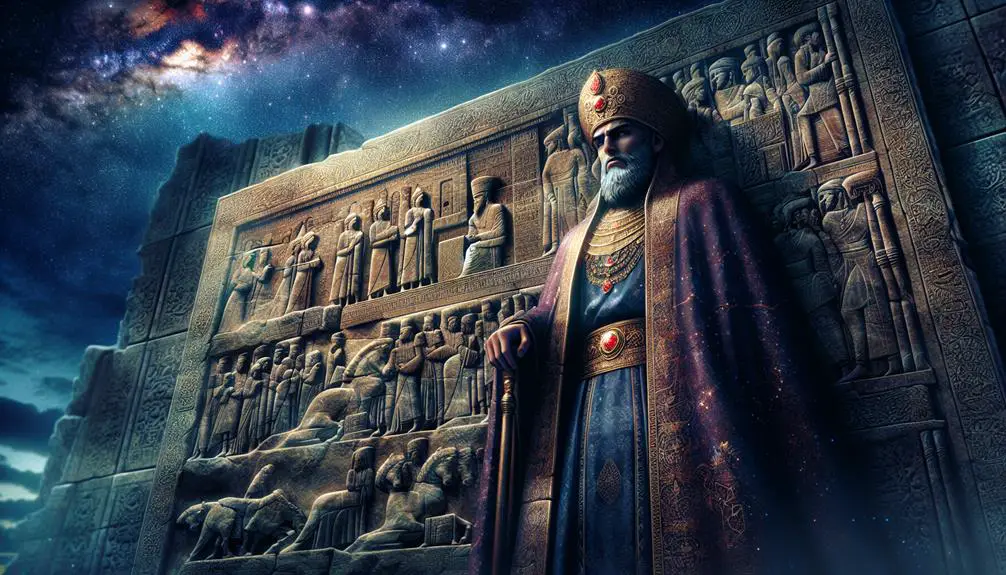
Persian Kings in the Bible Timeline
The intersection of Persian kings and biblical history presents a fascinating confluence of political power and religious narrative that has shaped both historical understanding and theological interpretations for centuries. From Cyrus the Great's pivotal decree that allowed the Jews to return to Jerusalem and rebuild the Temple, to the intriguing narrative of Esther that unfolds in the court of Xerxes I, each monarch's reign contributes a unique layer to this complex tapestry.
Unpacking the roles these rulers played not only in the physical restoration of Jerusalem but also in the shaping of Judeo-Christian tradition invites a closer examination of their legacy and influence, hinting at a deeper understanding of the interplay between faith and governance in ancient times.
Key Takeaways
- Persian kings played pivotal roles in enabling the Jewish return to Jerusalem and the reconstruction of the Temple.
- Their reigns exemplified a blend of military prowess and diplomatic strategies, influencing regional stability.
- Policies under Persian rule promoted cultural integration, religious tolerance, and economic reforms, impacting the development of civilization.
- The legacy of Persian monarchs in the Bible timeline underscores their significant contribution to religious freedom and enlightened leadership.
Cyrus the Great's Decree
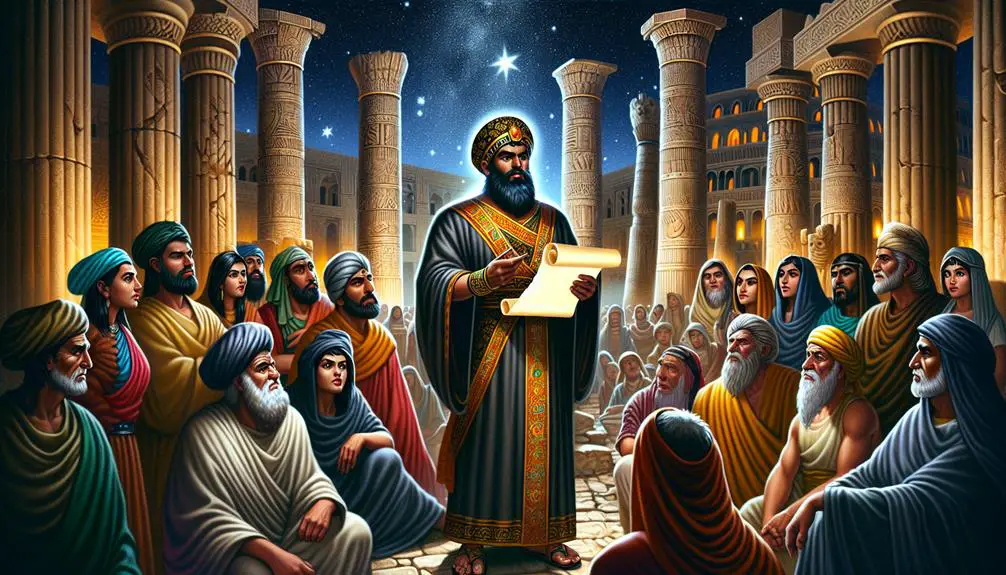
Cyrus the Great's decree, a pivotal edict in the annals of biblical history, marked a significant turning point for the Jewish people by authorizing their return to Jerusalem and the rebuilding of the Temple. This decree not only symbolized a profound act of religious tolerance and political astuteness but also underscored the broader diplomatic and strategic vision of Cyrus the Great. Embedded within the context of this decree is the Cyrus Cylinder, an artifact that corroborates biblical accounts and offers a tangible link to ancient declarations of governance and liberation. The Cylinder, discovered in the ruins of Babylon, is inscribed with an account of Cyrus's conquest of Babylon and his subsequent efforts to restore temples and repatriate displaced peoples, including the Jews.
The liberation of Babylon and the issuance of the decree are intrinsically connected, illustrating Cyrus's approach to empire-building, which diverged significantly from the practices of his predecessors. By allowing exiled communities to return to their homelands and restore their places of worship, Cyrus was not only facilitating the physical and spiritual rejuvenation of these communities but also laying the groundwork for a more stable and cohesive empire. This policy of tolerance and restoration helped in pacifying conquered territories and in integrating diverse cultures into the Achaemenid Empire.
Analyzing the decree within the broader scope of Near Eastern political dynamics reveals Cyrus's insight into the complexities of empire management. His approach combined military conquest with policies aimed at winning the allegiance of his new subjects, thereby ensuring the long-term stability and prosperity of his empire. The Cyrus Cylinder, as a corroborative artifact, provides invaluable insights into the ancient world's political and religious ideologies, highlighting a momentous period of transition and the enduring legacy of Cyrus the Great's rule.
Cambyses II's Reign
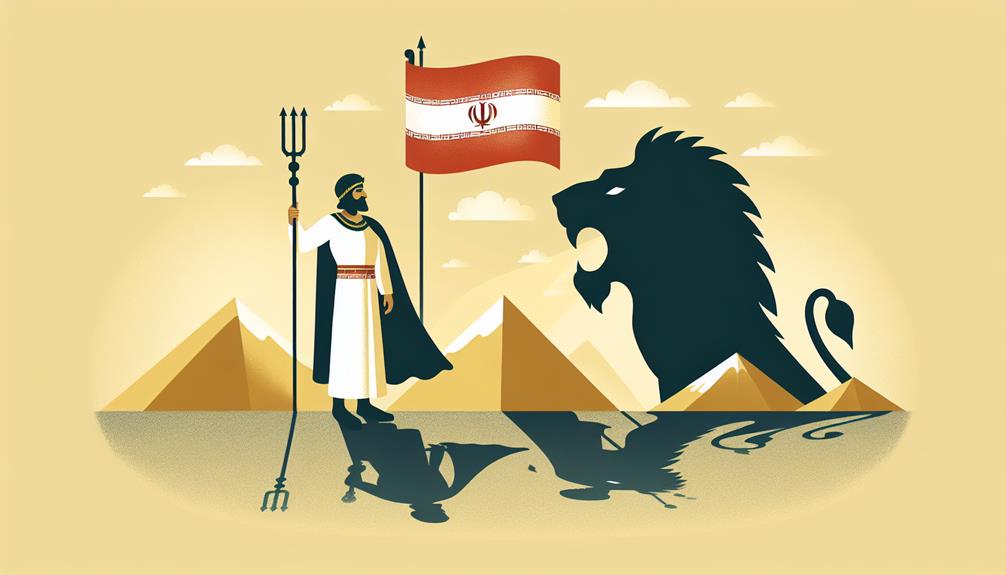
Following the transformative reign of Cyrus the Great, his son Cambyses II ascended to the throne, marking a new chapter in the expansive narrative of the Persian Empire. Cambyses II's reign is particularly notable for his efforts to consolidate and expand upon his father's legacy, especially through military campaigns and the administration of the vast empire he inherited. Among these endeavors, the Egypt campaign stands out as a significant episode that had far-reaching implications for Persian influence in the region.
Cambyses II's reign can be analyzed through several key aspects:
- Continuation of Cyrus's Legacy: Cambyses II sought to maintain and expand the empire built by his father, Cyrus the Great. His governance reflected a commitment to the administrative and military foundations laid during the previous reign, ensuring the empire's stability and prosperity.
- Egypt Campaign: Perhaps the most defining event of Cambyses II's rule was his successful campaign against Egypt in 525 BC. This military expedition not only extended Persian control over Egypt but also demonstrated the empire's military strength and strategic capabilities.
- Cultural and Political Integration: In addition to military conquests, Cambyses II's reign was marked by efforts to integrate conquered territories through a combination of cultural respect and political diplomacy, ensuring the smooth incorporation of diverse peoples into the Persian Empire.
- Legacy and Challenges: While Cambyses II's reign was characterized by significant achievements, it also faced challenges, including maintaining control over vast territories and managing the complexities of a diverse empire.
The Rule of Darius I
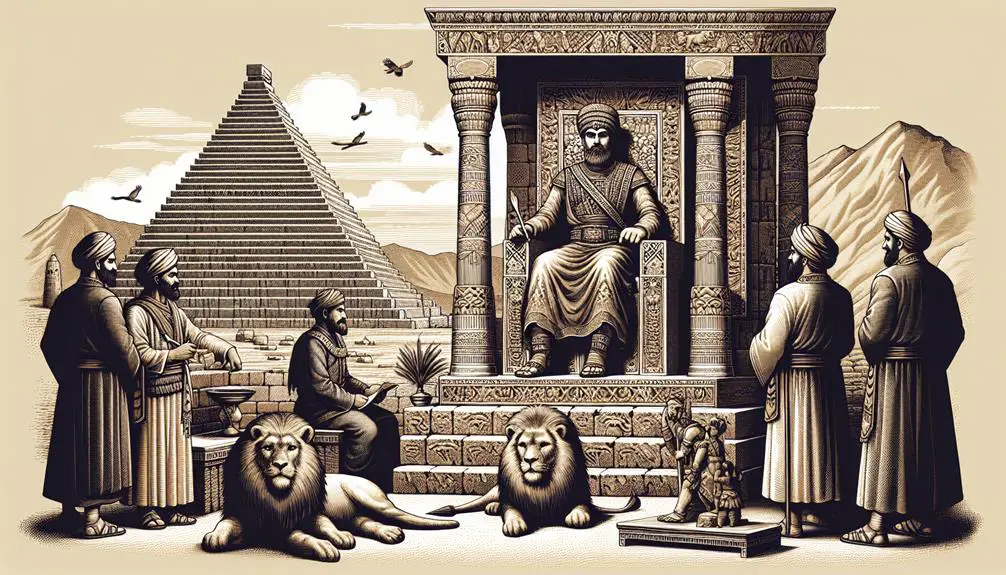
After the tumultuous reign of Cambyses II, the Persian Empire witnessed the ascendancy of Darius I, who significantly reshaped its administrative and military structures. Darius I, known historically for his far-sighted governance, embarked on a series of economic reforms and strategic military expansions that not only solidified the empire's dominance but also ensured its prosperity over a vast and diverse territory.
Darius's economic reforms were pivotal in stabilizing the Persian Empire. He introduced a standardized system of weights and measures, a move that facilitated trade and commerce across the empire's vast reaches. Moreover, he implemented a new taxation system that was more equitable and efficient, increasing the empire's revenue without overburdening its subjects. This economic overhaul supported the empire's infrastructure projects, including the famous Royal Road, which improved communication and trade.
On the military front, Darius's battle strategy was marked by both innovation and pragmatism. He reorganized the Persian army into a versatile and highly efficient fighting force, capable of rapid deployment across the empire's varied terrains. This reorganization included the creation of the Immortals, an elite infantry unit that played a crucial role in Persian military campaigns. Darius's strategic acumen was evident in his approach to expanding the empire's borders, where he preferred diplomacy and strategic marriages over outright conquest when possible.
Darius I's rule is a seminal period in the history of the Persian Empire, marked by significant administrative and military reforms that laid the foundation for its future successes. His economic and battle strategies not only consolidated the empire's power but also fostered an era of prosperity and stability.
Xerxes I and Esther
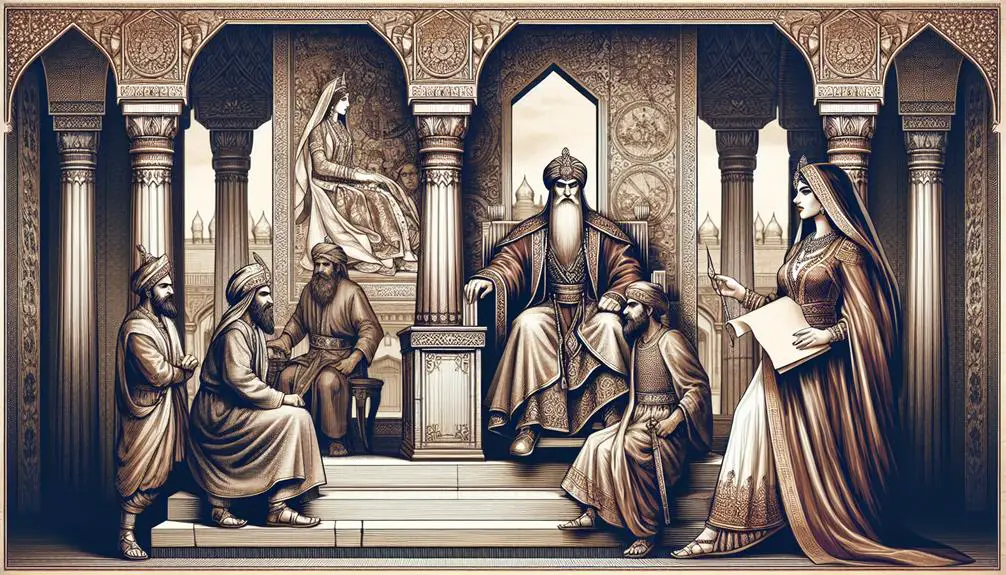
The intersection of Xerxes I's reign and the biblical narrative of Esther presents a compelling study of historical and theological significance.
This analysis will focus on providing an overview of Xerxes' rule, the courageous actions of Esther within this Persian context, and the broad implications of the royal decrees issued during this period.
Through a scholarly examination, these elements offer insights into the complex dynamics of power, faith, and governance in ancient Persia.
Xerxes' Reign Overview
Xerxes I, reigning from 486 to 465 B.C., stands out in biblical history primarily due to his marriage to Esther, which significantly influenced the Jewish people's fate during the Persian Empire. His reign is marked by several pivotal moments that highlight the complexity of his leadership and its impact on the ancient world.
- Xerxes' Legacy: His rule is characterized by ambitious expansion efforts and the consolidation of Persian power.
- Naval Strategies: Innovative naval strategies were employed in attempts to subdue Greek states, culminating in the famous Battle of Salamis.
- Architectural Contributions: Monumental projects, including the expansion of Persepolis, underscored his desire to leave a lasting mark on the Persian landscape.
- Religious Policies: Xerxes' approach to religious affairs, including his interactions with the Jewish community, showcased a pragmatic aspect of his rule, balancing traditional Persian beliefs with the empire's diverse spiritual landscape.
Esther's Courageous Act
Building on the understanding of Xerxes I's reign, a significant episode that further highlights the complexity of his leadership involves Esther's courageous act within the Persian court. This act is pivotal in the preservation of Jewish identity amidst the backdrop of royal banquets and political intrigue. Esther, a Jewish queen concealed within the Persian monarchy, leverages her position and the king's favor to avert a genocide against her people.
Aspect |
Detail |
|---|---|
Main Figure |
Esther |
Setting |
Persian Court |
Objective |
Preservation of Jewish Identity |
Her story exemplifies the nuanced interplay between personal courage and public influence, illustrating a critical moment where individual actions deeply impacted the broader cultural and historical landscape.
Royal Decree Impact
In the context of Xerxes I's reign, the issuance of a royal decree at Esther's behest marked a pivotal moment in the preservation of Jewish culture and identity within the Persian Empire. This action not only averted a potential genocide but also had profound policy implications and facilitated the cultural integration of the Jewish people within the empire.
- Preservation of Identity: The decree ensured the survival and cultural continuity of the Jewish community.
- Policy Implications: It signaled a shift towards more inclusive policies under Xerxes' rule.
- Cultural Integration: Facilitated a smoother integration of Jewish traditions within the Persian cultural mosaic.
- Precedent for Tolerance: Established a precedent for religious and cultural tolerance within the empire.
This moment underscores the complex interplay between royal authority, minority rights, and cultural policy in ancient empires.
Artaxerxes I's Edicts
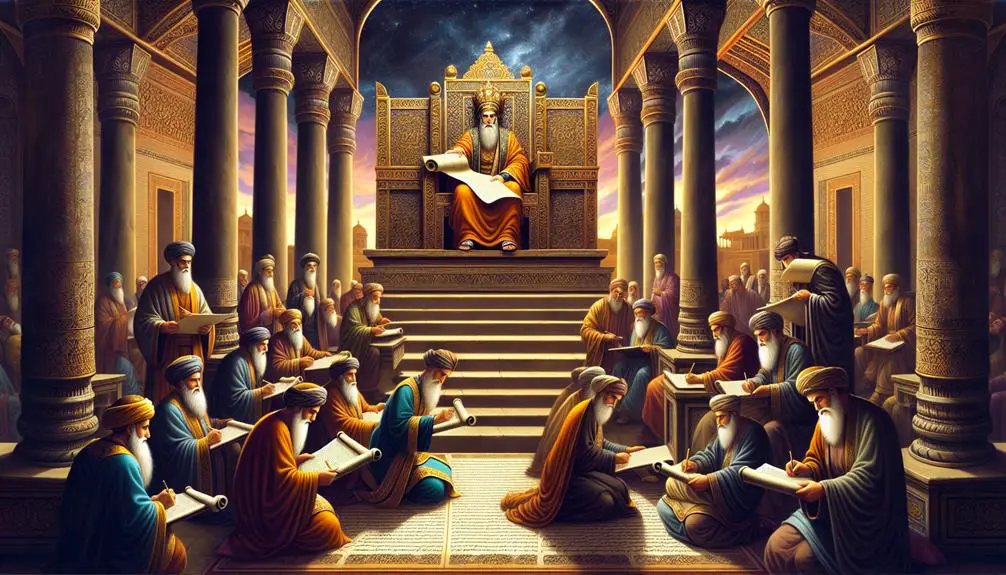
Artaxerxes I, the Persian monarch, issued several significant edicts that profoundly impacted the restoration and governance of Jerusalem during his reign. These decrees not only facilitated the physical rebuilding of the city but also laid the foundations for its economic and social restructuring. The monarch's directives were pivotal in re-establishing Jerusalem as a significant center after a period of decline and disrepair following the Babylonian exile.
The edicts of Artaxerxes I were multifaceted, addressing both immediate needs and long-term strategic goals. Economic reforms were a critical component of his policy towards Jerusalem. Artaxerxes recognized the importance of a stable economy for the recovery of Jerusalem and, by extension, the strengthening of the Persian Empire's western frontier. His decrees provided for the exemption of taxes for certain groups, which in effect incentivized the return of exiles and attracted new settlers. This move not only repopulated the city but also revitalized its economy through increased trade and agriculture.
Furthermore, Artaxerxes' edicts included provisions for military campaigns aimed at securing the region against external threats. By fortifying Jerusalem and its surroundings, Artaxerxes ensured the protection of a vital corridor within his empire. This strategic foresight not only safeguarded Persian interests but also contributed to the stability and prosperity of Jerusalem under Persian rule.
Influence of Persian Monarchs
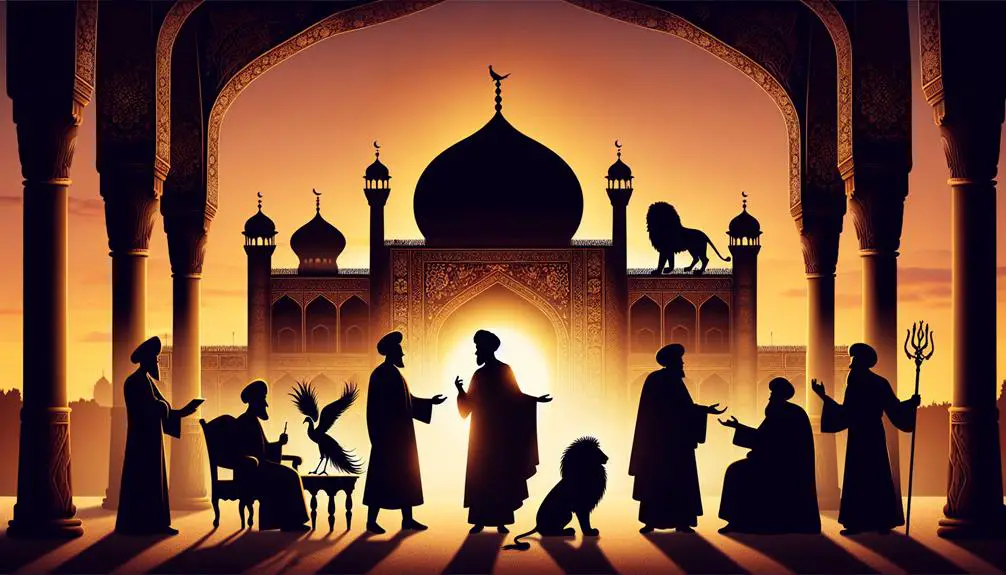
The reigns of Persian monarchs profoundly shaped the sociopolitical and cultural landscapes of their subject territories, notably influencing the restoration and governance of regions such as Jerusalem. These rulers implemented strategies that fostered cultural exchange and economic growth, thereby integrating diverse territories into their expansive empire. Their policies towards conquered lands were relatively liberal, allowing for a degree of local autonomy and religious freedom, which facilitated the peaceful coexistence of various cultures and religions within the empire. This approach not only secured the loyalty of their subjects but also encouraged the flow of goods, ideas, and people across the empire, enriching its cultural fabric and economic vitality.
The influence of Persian monarchs on their territories can be delineated through the following aspects:
- Promotion of Cultural Exchange: Persian rulers encouraged interactions among different cultures within the empire, leading to a synthesis of artistic, religious, and intellectual traditions. This cultural amalgamation fostered an environment of tolerance and mutual respect among the empire's diverse populace.
- Reconstruction of Conquered Territories: They invested in the infrastructure and restoration of important cities, including Jerusalem, thereby facilitating economic recovery and social cohesion in these regions.
- Implementation of Economic Policies: By standardizing weights and measures and introducing coinage, Persian monarchs streamlined trade and commerce, which stimulated economic activity across the empire.
- Autonomy and Religious Freedom: Allowing local governance and religious practices to continue unimpeded ensured the stability of the empire and minimized resistance, promoting a peaceful and prosperous rule.
Through these measures, Persian kings left a lasting legacy on the lands they governed, demonstrating the enduring impact of enlightened leadership on the development of civilization.
Frequently Asked Questions
How Did the Philosophical and Religious Beliefs of the Persian Kings Impact Their Governance and Policies, Particularly in Relation to the Jewish Population?
The philosophical and religious beliefs rooted in Zoroastrian ethics significantly influenced the governance and policies of the Persian kings. These beliefs manifested in royal edicts that advocated for justice, truth, and the protection of the weak.
Specifically, regarding the Jewish population, such principles led to policies that facilitated their return from exile and the rebuilding of the Temple in Jerusalem, underscoring a direct impact on governance directed by religious and philosophical convictions.
What Were the Economic Implications of the Persian Kings' Rule on the Regions Under Their Control, Including Judea, and How Did This Affect the Daily Lives of the Common People?
The economic implications of the rule over regions including Judea were significant, primarily through agricultural advancements and the expansion of trade networks.
These policies facilitated increased food production and a more robust exchange of goods, respectively. Consequently, this led to an improvement in the economic conditions of the common people, allowing for better access to resources and a slight upliftment in their daily lives, reflecting a direct impact of governance on economic prosperity.
Considering the Vastness of the Persian Empire, How Did the Persian Kings Manage Communication and Administration Across Such Diverse Territories and Cultures, Especially With the Jewish Provinces?
The administration and communication across the Persian Empire's vast and varied territories, including Jewish provinces, were effectively managed through an innovative Courier system and a decentralized Satrap governance. This approach allowed for efficient dissemination of royal decrees and facilitated local administration by entrusting power to regional governors.
These strategies ensured cohesive control while respecting the diversity of cultures within the empire, illustrating the Persian kings' adeptness at empire-building and governance.
Can We Identify Any Significant Architectural or Infrastructural Developments Initiated by the Persian Kings That Had a Lasting Impact on the Regions Mentioned in the Bible, Including Those Inhabited by the Jewish People?
The inquiry focuses on identifying significant architectural and infrastructural developments initiated by Persian kings that impacted regions, including those inhabited by Jewish populations.
Analyzing historical records reveals that Persian rulers made substantial artistic contributions and implemented infrastructural advancements post-military campaigns, promoting connectivity and cultural integration.
These developments not only facilitated administration across their vast empire but also had a lasting influence on the architectural and cultural landscape of the affected regions.
How Did the Succession and Power Struggles Within the Persian Dynasty Influence Their Foreign Policy and Relations With Neighboring States and Peoples, Including the Jewish Community, During and After the Reigns of the Kings Mentioned?
The interplay of succession and power struggles within the Persian dynasty significantly shaped their foreign policy and relations with neighboring states, including communities such as the Jewish populace.
These internal dynamics influenced military campaigns and fostered alliances through diplomatic marriages, thereby impacting regional stability and interactions.
An analytical review reveals that these political maneuvers were instrumental in maintaining Persian influence and managing relationships with various ethnic and political entities during and after their reigns.
Conclusion
In the rich tapestry of biblical narrative, Persian monarchs emerge as pivotal threads, weaving throughout the historical and prophetic texts. Through decrees, reforms, and policies, figures such as Cyrus the Great and Artaxerxes I have left indelible marks on the trajectory of Judeo-Christian tradition.
Their reigns, a confluence of political ambition and divine providence, underscore the intricate interplay between secular authority and spiritual destiny.
Thus, the legacy of these Persian kings endures, a testament to their significant role in shaping the biblical landscape.



Sign up